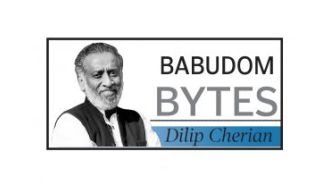Why ProPublica Focuses on Issues You May Not See on Cable News
A vaccine against tuberculosis has never been closer to reality. But its development slowed after its corporate owner focused on more profitable vaccines.

Series: A Closer Look: Examining the News
The photographs are arresting. Leaking roofs. Classrooms set up in closets and stairwells. Charred electrical outlets that short out when students plug in a laptop. The images document the devastating story of public school infrastructure in Idaho, a state where voters have repeatedly rejected bond issues needed to pay for new schools and repair old ones.
The idea of shining a spotlight on the crumbling schools was proposed by the state’s biggest newspaper, the Idaho Statesman, as a project for our Local Reporting Network. Working in partnership with Statesman reporter Becca Savransky, ProPublica engagement reporter Asia Fields recruited students, teachers, parents and more than 90% of the state’s superintendents to collect the undeniable evidence.
The story appeared in mid-December, just as students were preparing for their winter break. Within weeks, Gov. Brad Little announced his plan to spend $2 billion rebuilding Idaho’s schools. “We’ve all seen the pictures and the videos of some Idaho schools that are neglected — crumbling, leaking, falling apart,” Little told Idaho’s Legislature as he shared with lawmakers the photos we had gathered.
“In one school I visited, raw sewage is seeping into a space under the cafeteria,” he said. “Folks, we can do better.”
Little’s response to our investigation was hardly the norm, but it’s not unique. In the past few months, our reporting has prompted a startlingly broad array of institutions, businesses and political leaders to vow to “do better.” The surge in impact is coming at a particularly tenuous moment for journalism, with for-profit and nonprofit organizations rocked by layoffs and declining revenue. Inevitably, news organizations’ attention will turn to what promises to be a long and exhausting presidential campaign.
Investigative reporting has a role to play in electoral politics. But it’s worthwhile to keep in mind what can be accomplished when it’s focused on issues that aren’t being discussed every night on CNN. At ProPublica, we’ve seen a surprising number of such stories in the early weeks of 2024.
In January, the secretary of Veterans Affairs, Denis McDonough, flew to Chico, California, to meet directly with front-line workers at a clinic that failed two veterans who sought help with acute mental health crises. Both went on to kill their mothers in shootings in the first days of January 2022. Our reporting revealed serious lapses in the mental health care both veterans received. We learned that the clinic had not had a full-time, on-site psychiatrist for five years and that staffers had long expressed concerns about its inability to provide care.
McDonough said the VA has to make sure that its resources are growing as fast as the local number of veterans so that “they can get the timely access to care and the timely access to benefits that they have earned. We’re making progress on that, but there’s still more work to be done, and we will not rest until we get it done.”
Although we put out regular reports on impact, it’s not always precisely clear how much of a role our journalism played in triggering reform. Sometimes, our stories are revelatory, bringing to light a problem that no one knew existed such as when we reported on the hidden biases of algorithms used to predict future criminality. Other times, our work brings a broader public understanding of issues already well understood by the affected communities.
One of the best examples of the latter came in our reporting on the failure of museums across the country to follow a federal law, the Native American Graves Protection and Repatriation Act, requiring the return of ancestral remains and sacred objects. The law was widely ignored by leading museums and universities; more than 30 years after its passage, the remains of over 210,000 Native Americans had yet to be returned. Institutions faced little or no consequences for their failure to comply with the statute. And so we created a NAGPRA database that allowed anyone — museum practitioners, tribal representatives, reporters, interested readers — to identify the more than 600 federally funded institutions that were still holding remains and other objects. Because the database included so many smaller, regional institutions, we trained journalists to use it to report on this issue in their local areas. More than 70 news organizations have used our data in their reporting.
That pressure brought results. Nearly 19,000 remains were returned last year, more than in any previous year. In January, the American Museum of Natural History in New York announced that it was shuttering exhibits that include items from tribes in Montana, Wisconsin and the Dakotas. “While the actions we are taking this week may seem sudden, they reflect a growing urgency among all museums to change their relationships to, and representation of, Indigenous cultures,” the museum’s director, Sean Decatur, wrote in an email to staff. “The Halls we are closing are vestiges of an era when museums such as ours did not respect the values, perspectives, and indeed shared humanity of Indigenous peoples.”
Last month, medical device giant Philips Respironics announced that it had agreed to stop selling sleep apnea machines and other respiratory devices in the United States after a series of stories by ProPublica and the Pittsburgh Post-Gazette. Questions about the safety of the devices have been widely known since 2021, when the company launched a massive recall. Philips publicly acknowledged that the foam used to make the machines quieter could break down and emit carcinogenic fumes.
Our reporting took the story much further. We revealed that the company had known of problems with the foam for more than a decade and had withheld thousands of complaints from regulators despite a federal law that requires reporting. Since the recall, Philips has promised to fix the problem by sending out millions of safe replacement machines, but reporters discovered that there was evidence those machines were releasing dangerous chemicals as well. The Food and Drug Administration was alerted to the problem more than two years ago but has provided little information to the public about whether the replacement machines are safe. Philips has said that the new foam in its latest devices is not dangerous. The FDA said more tests are needed.
The ebb and flow of public attention is difficult if not impossible to handicap. We wrote about TurboTax for years before the federal government began to investigate whether it was cheating customers. In 2022, the company settled a lawsuit brought by 50 state attorneys general and the District of Columbia and agreed to pay $141 million to 4.4 million people who had been enticed into paying fees for tax preparation that had been advertised as “free.” This year, the Federal Trade Commission ordered the maker of TurboTax to stop misleading consumers in what it termed a “deceptive ad campaign” that was “broad, enduring, and willful.” (In a statement, Intuit said it planned to appeal the order in federal court.)
The last few months have been brutal for the American media, punctuated by layoffs at some of journalism’s most storied newsrooms. The problems are real, particularly with the business models of for-profit companies that aren’t headquartered in New York.
But there are glimmers of hope. The worrying trends of 21st-century American life, from the division of the country into red and blue enclaves to the tendency of social media algorithms to create self-confirming bubbles of like-minded people, have not eliminated the power of great journalism to catalyze changes. The potential to spur impact won’t fix the industry’s broken business model, but it’s a sign of health in our democracy, something worth noting amid all of this year’s worrying headlines.
ProPublica is a nonprofit newsroom that investigates abuses of power. Sign up to receive our biggest stories as soon as they’re published.
ProPublica is a nonprofit newsroom that investigates abuses of power. Sign up to receive our biggest stories as soon as they’re published.






